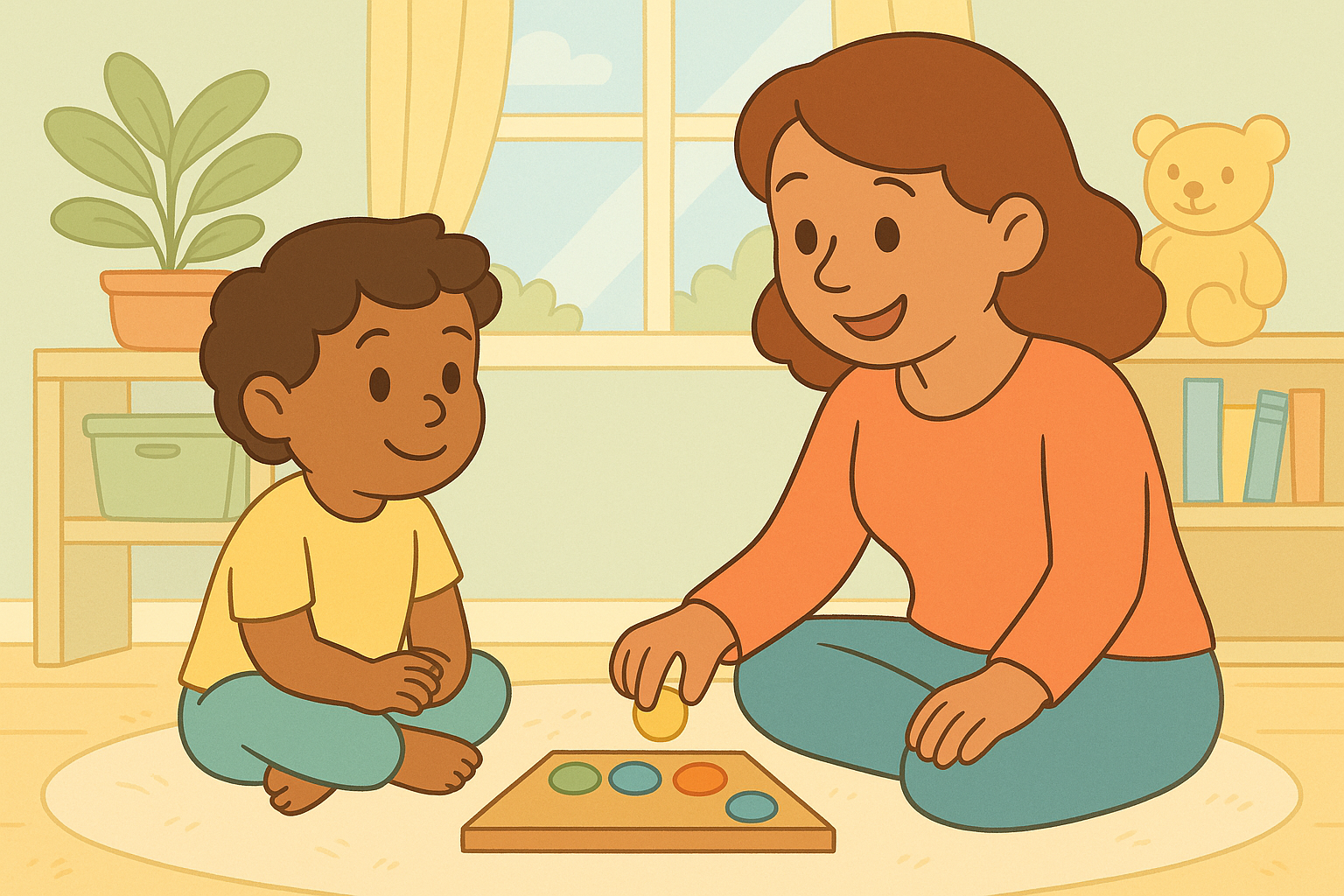Teaching Patience and Focus Through Turn-Based Play
Teaching Patience and Focus Through Turn-Based Play
Why Turn-Based Play Builds More Than Just Good Manners
Every time your child waits their turn — whether it’s rolling a ball, building with blocks, or playing a board game — they’re developing something powerful: self-regulation.
Turn-based play teaches children how to manage emotions, pay attention, and think ahead — the same skills they’ll use later for reading, teamwork, and classroom learning.
The Brain Science of Waiting and Focusing
Waiting and focusing rely on the brain’s executive function system, located in the prefrontal cortex.
When kids take turns, their brains are practicing three key skills:
Impulse control: Holding back from acting right away.
Working memory: Remembering the rules and whose turn it is.
Attention flexibility: Switching between “waiting” and “acting” roles smoothly.
The more children play this way, the stronger these cognitive “muscles” become.
(Also see: How to Teach Self-Control Through Simple Games)
Step 1: Start With Quick, Low-Stakes Turn-Taking
Young children learn best through repetition and success.
Start with simple, fast-paced games that don’t require long waiting periods.
Try:
Rolling a ball back and forth
Building block towers together
Taking turns feeding toy animals
Turn-by-turn drawing (“I draw a circle, you draw a square”)
These build the rhythm of turn-taking — one action at a time, with visible cause and effect.
Step 2: Add Predictable Structure
Predictability helps children stay calm and confident during waiting moments.
Before starting, explain what will happen:
“First it’s my turn, then it’s your turn.”
Use consistent phrases and signals:
“My turn… your turn.”
“Now it’s your go!”
Children learn faster when rules are short, rhythmic, and repeated.
Step 3: Celebrate the Waiting
Make waiting a positive part of the game instead of something frustrating.
You can say:
“You waited so patiently!”
“That was a calm wait — great job watching!”
If your child struggles, turn the waiting time into a mini activity:
“While you wait, can you guess what I’ll do next?”
This keeps their attention active even when it’s not their turn.
(Also see: How to Build Confidence in Early Learners)
Step 4: Turn Everyday Moments Into Turn-Taking Practice
Turn-taking doesn’t only happen in games — it’s part of daily life.
You can model patience in routines like:
Brushing teeth (“My turn to brush, your turn next.”)
Cooking (“I stir, then you stir!”)
Putting on shoes (“You do one, I’ll do one.”)
Every shared action strengthens cooperation and anticipation.
Step 5: Introduce Simple Board and Card Games
Board games are one of the most natural ways to teach patience and attention.
Start with short, visual games that keep engagement high:
Candy Land or Chutes & Ladders for sequencing and focus.
Matching games for memory and observation.
Uno or Go Fish (for older preschoolers) to practice waiting for turns and following rules.
Keep play light and silly — the focus is on practice, not perfection.
(Also see: Encouraging Cooperative Learning in Small Groups)
Step 6: Build Focus Through Repetition
Repetition helps children remember rules and sustain attention longer each time they play.
You can make games progressively harder:
“Now we’ll wait two turns before it’s yours again!”
Gradually increasing the challenge strengthens endurance and concentration.
Step 7: Use Visual Cues for Patience
Visual timers, turn cards, or physical objects (like passing a toy or block) help children “see” the waiting process.
You might say:
“When you’re holding the bear, it’s your turn.”
These concrete cues support abstract concepts like fairness and order, especially for younger children.
(Also see: Using Visual Schedules to Support Early Independence)
Step 8: Incorporate Storytelling
Turn-taking games can be woven into pretend play or storytelling too.
“You say what happens next in our story!”
“Your puppet talks first, then mine.”
This builds conversational rhythm, narrative flow, and attention — all key literacy skills.
Step 9: Connect Patience With Emotion Regulation
Turn-based play naturally brings up feelings — excitement, frustration, pride, disappointment.
Use these moments to teach emotional language:
“You were disappointed when you had to wait — that’s okay.”
“You stayed calm even though you really wanted to go first — I’m proud of you.”
Learning to name emotions helps children manage them in future social situations.
Step 10: Add Cooperative Goals
Instead of competition, try shared-goal games — where everyone wins together if they follow the rules or complete a mission.
For example:
Stack blocks to build a shared tower.
Move puzzle pieces together to complete a picture.
Work as a team to “save” stuffed animals from an imaginary storm.
These experiences shift focus from “me” to “we,” deepening patience and empathy.
Step 11: Celebrate Small Wins
Children thrive when their efforts are noticed.
After a turn-based game, highlight what went well:
“You waited every time!”
“You stayed focused and remembered the rules!”
Small celebrations build motivation and intrinsic pride — fueling long-term self-regulation.
(Also see: The Role of Fine Motor Play in Academic Readiness)
Step 12: Model Turn-Taking as a Family
Turn-taking isn’t just a child skill — it’s a family culture.
You can model it in conversations:
“I’ll listen to your idea first, then I’ll share mine.”
Or during meals:
“Your turn to tell something good about your day.”
Seeing turn-taking in action teaches respect, listening, and focus in real-world ways.
This content is for educational purposes and is not a substitute for professional medical or psychological advice.
Popular Parenting Articles




